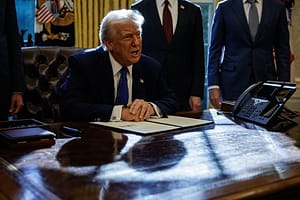The price of West Texas Intermediate (WTI) crude oil started the week around $74.50 per barrel, marking a drop of over 4.00% from the previous week.
This decline ends a four-week streak of gains, raising concerns in the market. Statements by former U.S. President Donald Trump have been identified as the primary catalyst for this bearish trend, as he called on OPEC to lower crude prices to weaken Russia’s position and push for a resolution to the conflict in Ukraine.
Trump has urged OPEC member countries to increase oil production, arguing that this could stabilize the market and benefit consumers.
However, OPEC has decided to stick to its gradual supply increase strategy, which will begin in April. This stance has created uncertainty about the supply-demand balance in the coming months.
Meanwhile, U.S. policies are crucial in shaping the global market. The Trump administration pushed initiatives to maximize domestic energy production, contributing to the oversupply in the market.
Additionally, threats of sanctions against Russia and Iran could further complicate the landscape, intensifying price fluctuations.
Uncertainty is also tied to geopolitical volatility. Trump’s strategy of pressuring OPEC is rooted in his aim to weaken the Russian economy, which heavily depends on energy exports. This approach could disrupt traditional oil trade patterns, impacting producers and consumers.
On the other hand, analysts point out that the market also faces additional risks from the global economic slowdown. Weakening demand and a potentially excessive supply could extend the WTI’s bearish trend. These conditions may keep prices under pressure in the short term, primarily if OPEC does not act swiftly to adjust its production.
Although Trump’s strategy targets specific goals, such as pressuring Russia and alleviating energy costs for U.S. consumers, his actions also have far-reaching implications. Active intervention in the oil market could shift trade and diplomatic dynamics, creating new challenges for the global energy industry.
In conclusion, the Trump effect is exerting significant pressure on oil prices, generating uncertainty on both the supply and demand sides. While his efforts aim to destabilize key players like Russia and balance costs for consumers, the consequences could extend beyond his immediate objectives. In such a complex and volatile market, the decisions of global leaders will continue to play a pivotal role in determining the direction of crude oil prices.
Get real time update about this post category directly on your device, subscribe now.






Leave a Comment